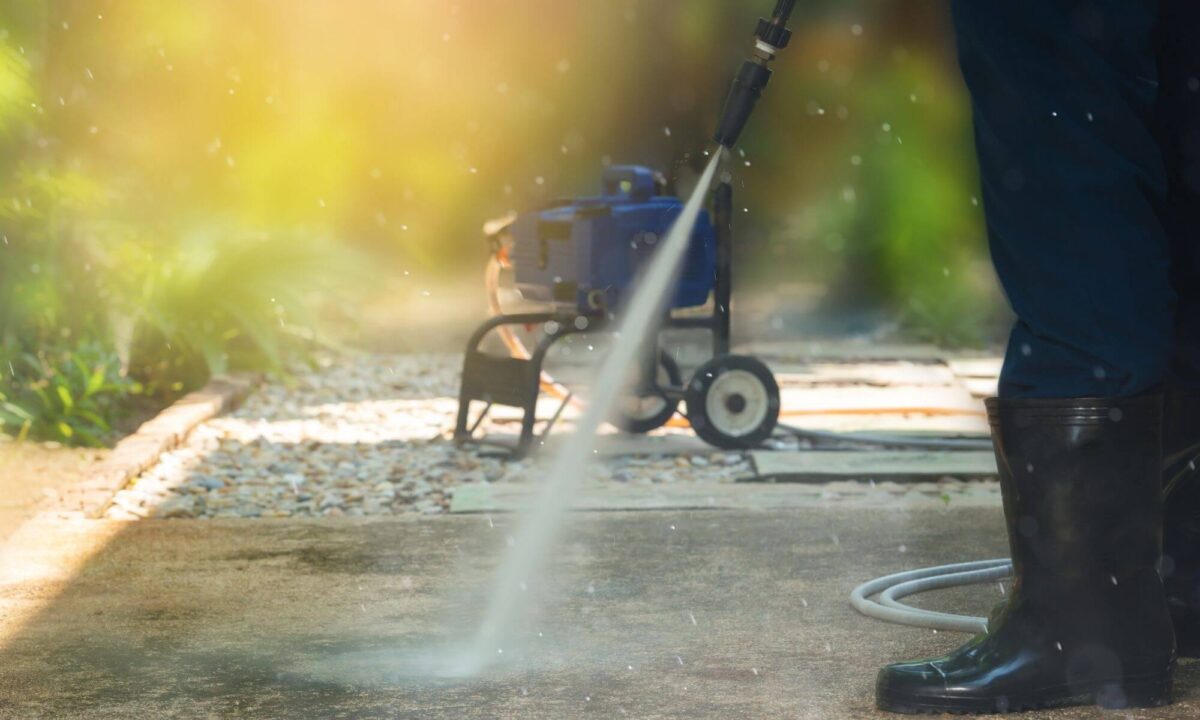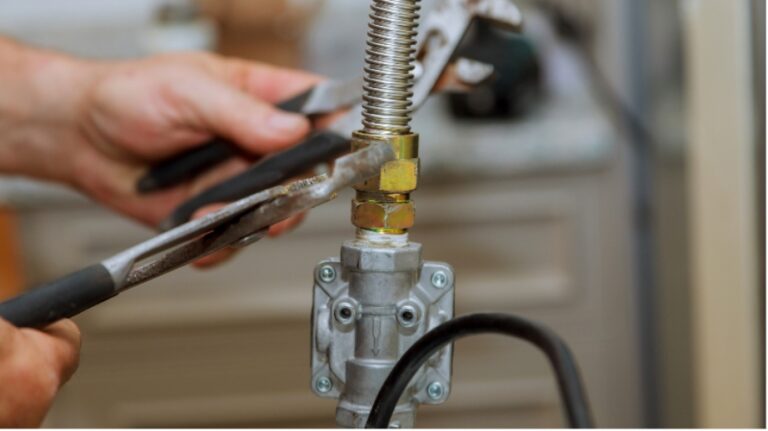The Science Behind Pressure Washing: Techniques for Deep Cleaning
The exterior surfaces of homes and businesses face constant exposure to dirt, grime, pollutants, and even mold. Over time, these elements accumulate, leading to discolored surfaces, compromised materials, and an overall reduction in curb appeal. This is where pressure washing comes in—an efficient, science-backed cleaning method that restores the look and integrity of a wide variety of surfaces.
Pressure washing goes beyond simply spraying water at high speed. It involves understanding the right techniques, water pressure, and cleaning agents to ensure that surfaces are cleaned thoroughly without causing damage. In this article, we’ll dive into the science behind pressure washing, exploring the techniques that make it such an effective solution for professional exterior cleaning for homes and businesses.
1. How Pressure Washing Works
At its core, pressure washing is a process that uses a high-powered stream of water to remove contaminants from surfaces like concrete, wood, brick, and metal. The force of the water, measured in pounds per square inch (PSI), is what makes pressure washing so effective at tackling tough dirt, grime, and stains.
a. The Role of PSI in Pressure Washing
PSI is the standard unit of measurement used to quantify the water pressure delivered by a pressure washer. The higher the PSI, the more forceful the water stream, and the more effective it is at removing stubborn buildup. However, different surfaces require different levels of pressure to avoid damage.
For example:
- Concrete surfaces can handle higher pressure, often between 2,500 and 3,500 PSI, to clean away tough oil stains or dirt.
- Wooden decks need gentler pressure, typically between 500 and 1,500 PSI, to avoid splintering the wood.
- Roof washing, particularly on shingle roofs, requires an even lower PSI, usually in the soft-wash range, to prevent shingle damage.
Understanding the correct PSI for each surface is essential to effective pressure washing. Too much pressure can erode or crack the material, while too little pressure won’t provide the deep clean required.
b. GPM: The Flow Rate of Water
In addition to PSI, gallons per minute (GPM) is another key factor in pressure washing. GPM measures the volume of water flowing through the pressure washer. High GPM machines allow more water to hit the surface in a shorter amount of time, which helps rinse away dirt and debris more efficiently. Combining high PSI with the right GPM ensures that surfaces are cleaned quickly and thoroughly, making pressure washing a time-effective method for large areas.
2. The Role of Cleaning Agents in Pressure Washing
While water pressure plays a significant role in removing grime, the use of specialized cleaning agents can enhance the effectiveness of pressure washing. Depending on the surface and the type of contaminants being removed, different cleaning solutions may be used.
a. Detergents and Surfactants
Surfactants, found in many pressure washing detergents, help to break the bond between dirt and the surface, making it easier for the pressurized water to remove it. These detergents work by reducing surface tension, allowing water to penetrate and lift away stubborn grime, oil, and grease. For surfaces like driveways, parking lots, and heavily stained areas, the use of detergents can significantly improve the cleaning outcome.
b. Eco-Friendly Cleaners
Many pressure washing professionals, including Presh Clean, use eco-friendly cleaning solutions that are safe for the environment while still providing powerful cleaning results. These biodegradable cleaners break down naturally without harming plants, animals, or water systems. Using eco-friendly detergents not only supports sustainable practices but also ensures that pressure washing can be done safely near gardens, lawns, and natural water sources.
3. Techniques Used in Professional Pressure Washing
Not all pressure washing jobs are the same, and there are specific techniques used depending on the surface, the type of buildup, and the desired results. Professional pressure washing Westchester County teams are trained to use the right combination of pressure, detergents, and cleaning methods to ensure effective and safe cleaning.
a. Soft Washing for Delicate Surfaces
While pressure washing is ideal for hard surfaces, delicate areas such as roofs, siding, and windows require a softer approach. Soft washing uses low-pressure water (typically under 500 PSI) combined with cleaning agents to remove algae, mold, and dirt without causing damage.
For instance, roof washing often requires soft washing to protect shingles and tiles. Using high pressure on a roof could strip away protective granules, leading to premature wear and potential leaks. Soft washing prevents this by gently cleaning the roof while maintaining its structural integrity.
b. Surface-Specific Techniques
Concrete, brick, and stone surfaces can withstand higher pressure, but they still need to be handled with care to avoid cracking or chipping. For surfaces like driveways and sidewalks, a technique called “surface cleaning” is often used. This method employs a specialized tool that rotates high-pressure water jets within a circular housing, ensuring an even clean across the surface.
For commercial cleaning projects, where larger areas like parking lots or loading docks are involved, surface cleaning equipment allows for efficient cleaning without leaving streaks or patches. This results in a uniform, deep clean that improves both the appearance and safety of the property.
4. The Safety Aspect of Pressure Washing
Beyond its effectiveness, safety is a major factor when it comes to pressure washing. The powerful water jets used in the process can cause injury if not handled correctly, and improper use of high pressure can damage property. Professional pressure washers prioritize safety by using the correct equipment, wearing protective gear, and ensuring that all surfaces are treated with the appropriate pressure.
a. Preventing Surface Damage
Using the wrong PSI for a surface can lead to expensive repairs. For example, too much pressure on wood decks can cause splintering, while excessive pressure on a roof can strip away shingles or tiles. Professionals like Presh Clean are trained to assess the material and adjust the PSI accordingly, preventing damage and prolonging the life of the surface.
b. Protecting People and Surroundings
While pressure washing is effective for removing mold, algae, and grime, it also requires precautions to ensure safety. High-pressure water can cause serious injuries if it comes into contact with skin, and loose debris from surfaces being cleaned can become projectiles. Professional cleaners use safety barriers, wear protective equipment, and ensure the area is clear of bystanders to prevent accidents during the cleaning process.
5. Benefits of Regular Pressure Washing
Maintaining a clean exterior isn’t just about appearance—it’s about protecting your property from long-term damage. Regular pressure washing offers numerous benefits for both homes and businesses, from preventing structural damage to enhancing safety.
a. Preventing Decay and Deterioration
Over time, mold, mildew, algae, and pollutants can break down the materials that make up your property’s exterior. Regular pressure washing removes these harmful elements, preventing rot, decay, and deterioration. For businesses, keeping outdoor areas like sidewalks and parking lots clean also helps to reduce wear and tear from heavy foot traffic.
b. Enhancing Safety
A buildup of dirt, algae, or grease on walkways, driveways, or parking lots can create slippery surfaces, increasing the risk of slips and falls. Surface cleaning removes these hazards, improving the safety of outdoor areas. For commercial properties, this is particularly important for reducing liability risks and ensuring that customers, employees, and visitors have a safe environment to navigate.
c. Boosting Curb Appeal
First impressions matter, whether it’s for a home or business. A clean, well-maintained exterior reflects positively on the property owner and can increase the value of the building. Regular pressure washing ensures that surfaces look fresh and inviting, enhancing curb appeal and making a positive impact on neighbors, visitors, or potential buyers.
Conclusion
Pressure washing is more than just a powerful cleaning method—it’s a science that involves using the right combination of pressure, water flow, and cleaning agents to achieve deep, effective results. From roof washing to surface cleaning, understanding the right techniques for each surface ensures that properties are cleaned safely and efficiently.
By investing in regular professional exterior cleaning for homes and businesses, property owners can protect their investment, enhance safety, and maintain a clean, attractive appearance. With the expertise of Presh Clean, you can rest assured that every surface will receive the right treatment, leaving your property in top condition.






